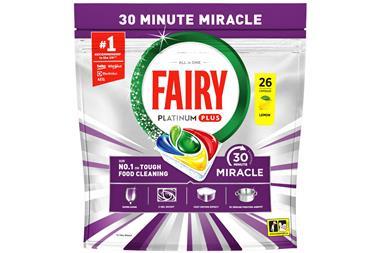Poultry bosses have hit out at fresh allegations of poor welfare standards in the chicken sector.
The RSPCA claimed this week that 82% of chickens sold in supermarkets suffered from hock burns - ammonia burns on their lower legs that can be caused by wet floor litter.
The research, conducted by Cambridge University in 2003, was featured in a Channel 4 Dispatches documentary last Thursday and will be published in the August edition of British Poultry Science.
But Charles Bourns, chairman of British Chicken Marketing, dismissed the findings as “misrepresentative and outdated”. He conceded producers had experienced difficulties back in 2003 due to
the withdrawal of antibiotic growth promoters, but added: “The industry was responding to customer requirements to remove growth promoters and had to relearn to manage their flocks after 15 years of using those drugs. In 2005, you find conditions greatly improved.”
Bourns insisted a proposed new EU directive, laying down minimum standards for the production of broiler chickens across all member states, would tackle any welfare offenders. British Poultry Council chief executive Peter Bradnock said it was difficult to reconcile the report’s claim with current industry performance. He said the methodology of the research was open to question.
David Clarke, chief executive of Assured Food Standards, said that the claims were “dubious”.
“We will be especially interested to look at the comparative data on organic birds, which also showed higher levels of hock mark than we might have expected.
“This was despite the birds being substantially smaller and therefore younger at the time of slaughter.
“The development of marks on the hock is more likely to develop with age.”
Alyson Magee
The RSPCA claimed this week that 82% of chickens sold in supermarkets suffered from hock burns - ammonia burns on their lower legs that can be caused by wet floor litter.
The research, conducted by Cambridge University in 2003, was featured in a Channel 4 Dispatches documentary last Thursday and will be published in the August edition of British Poultry Science.
But Charles Bourns, chairman of British Chicken Marketing, dismissed the findings as “misrepresentative and outdated”. He conceded producers had experienced difficulties back in 2003 due to
the withdrawal of antibiotic growth promoters, but added: “The industry was responding to customer requirements to remove growth promoters and had to relearn to manage their flocks after 15 years of using those drugs. In 2005, you find conditions greatly improved.”
Bourns insisted a proposed new EU directive, laying down minimum standards for the production of broiler chickens across all member states, would tackle any welfare offenders. British Poultry Council chief executive Peter Bradnock said it was difficult to reconcile the report’s claim with current industry performance. He said the methodology of the research was open to question.
David Clarke, chief executive of Assured Food Standards, said that the claims were “dubious”.
“We will be especially interested to look at the comparative data on organic birds, which also showed higher levels of hock mark than we might have expected.
“This was despite the birds being substantially smaller and therefore younger at the time of slaughter.
“The development of marks on the hock is more likely to develop with age.”
Alyson Magee

















No comments yet